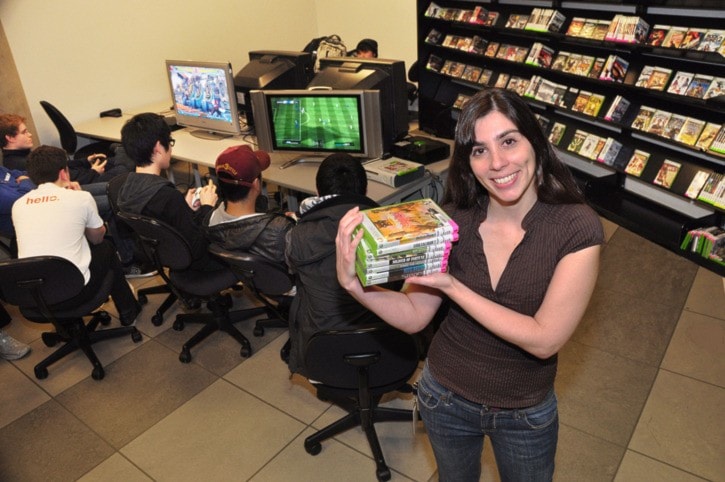Where video game players focus when they look at gaming screens and other physical and emotional cues are among nuances helping Simon Fraser University’s Veronica Zammitto – a cognitive psychologist - to improve game design.
The Argentinian-born Zammitto, a graduate student in SFU Surrey’s School for Interactive Arts and Technology (SIAT), works part time for video game giant Electronic Arts. She’s an example of a growing demand by the industry to reap the benefits of talent beyond artists and technology experts.
Zammitto uses eye-tracking technology to measure where people look when they play to gather information that helps game designers decide where to place game elements – details that keep the play flowing. She also studies emotions and measures levels of stress or excitement, factors that can influence game appeal or turn-off.
“My role is to study game players using a variety of techniques, including eye-tracking and analyzing signals from facial muscle activity, and measuring the electrical conductivity of the skin (measurements that correlate with emotional arousal) as well as heart rate,” she explains.
An avid gamer, Zammitto’s research has included several high-profile games, including NBA Live 10 and NHL 11. Her recommendations are often quickly implemented, making the task all the more satisfying.
“Having the opportunity to work with someone like Veronica and the skill set that she can bring opens up so many design opportunities to make our games even better, from front end menu design to the in-game engagement levels,” says Paul Newton, Zammitto’s supervisor at EA.
Zammitto works for EA through the federal government’s MITACS program, which funds connections between academia and industry.
She moved to Canada after meeting SFU professor Jim Bizzochi’s SIAT team at the Digital Games Research Association annual conference in Vancouver. She entered SFU’s master’s program in 2006 and has since completed it, and is currently a doctoral student.
Her interest in video games grew during her studies at the University of Belgrano in Buenos Aries. “One of my favorites was StarCraft, which I continue playing today in its newer version StarCraft 2,” she says.
As video games become more sophisticated there are nuances only visible to psychologists, she says. “These games are usually so well built but from a psychological perspective there may be small tweaks that can make them that much more enjoyable and easier to play,” says Zammitto. “Understanding how and why people respond the way they do gives cognitive psychologists a certain advantage.”
A consummate diver in her spare time, Zammitto hopes to land a job in industry and is currently working with SFU colleagues to develop new software that will streamline her research.
